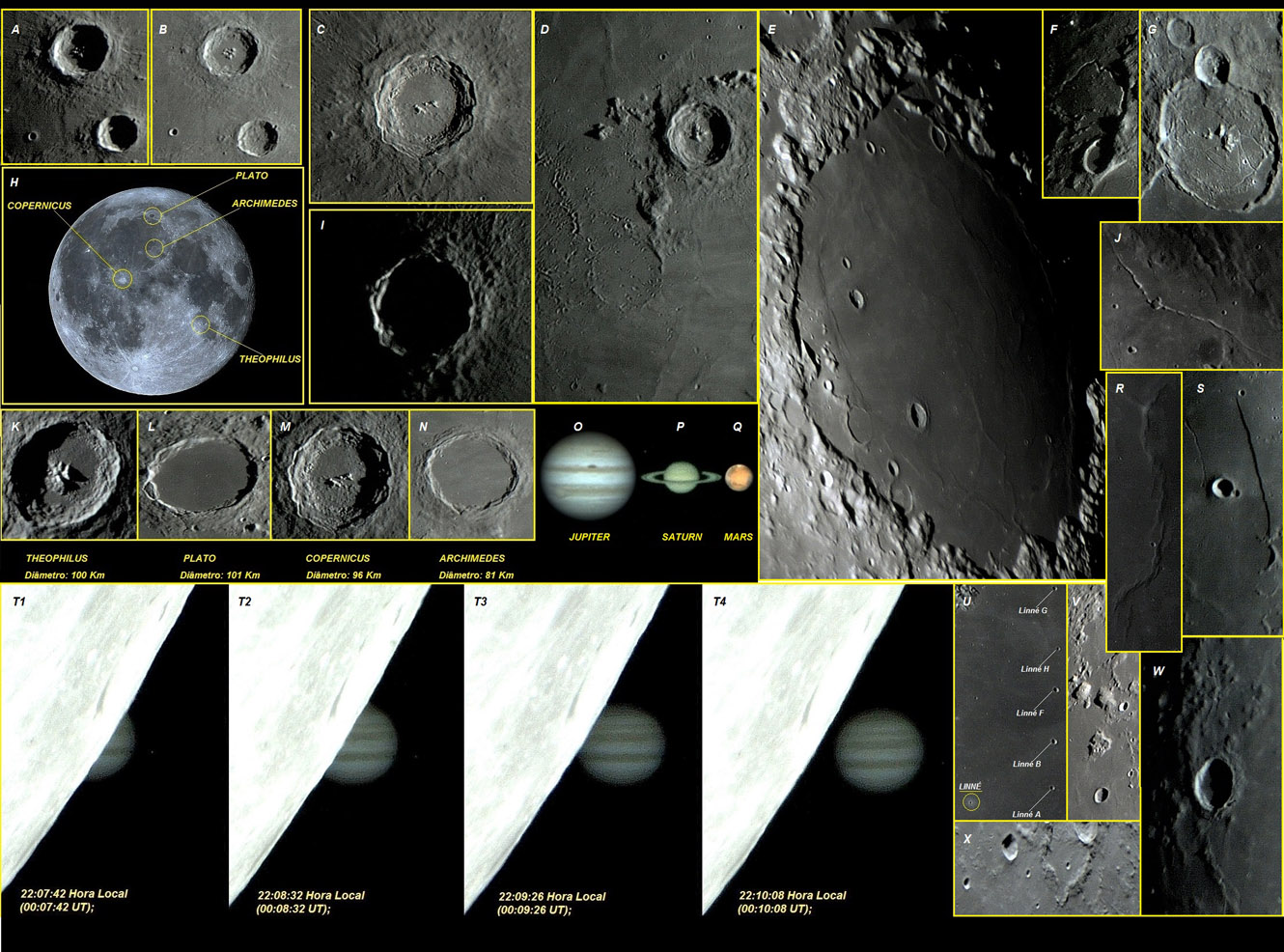September 30, 2014
Preaching To the Choir

image by Ricardo Jose Vaz Tolentino
When the topic is astronomical observation, given our view from Earth, the Moon is really a cosmic giant. It is no wonder that many professional and amateur astronomers have chosen the Moon to be the subject of scientific study of their lives. The advantages of observing the Moon in relation to other space objects are as follows:
- The Moon is the most prominent object in the night sky and the second brightest astronomical object in the firmament.
- The Moon is easily observable with sharpness even from large and polluted urban centers.
- It is not monotonous to observe the Moon. Our natural satellite constantly changes its appearance due to its movements which change light and shadows. The Sun rises and sets over the Moon's rich relief, always creating observational novelties.
- Depending on the eyepiece used at the telescope, we can observe a wide field covering a broad area with several features, or focus on a specific feature.
- The Moon is a telescopic vision richer in detail, with several targets in one, containing dark maria, mountains, impact craters, volcanic craters, secondary craters, ghost craters, channels, scarps, wrinkle ridges, extinct volcanoes and more.
- The Moon is a huge target compared with other celestial bodies such as the planets. For example, Jupiter, the largest planet in the Solar System, when observed from Earth, has approximately the same angular diameter as the craters Theophilus, Plato, Copernicus or Archimedes.
Besides all this, to brighten even more the performance of the Moon, there are those extra attractions, such as occultations, eclipses and TLPs.
Although decades have passed since the last astronaut stepped onto the Moon (Eugene Cernan - Apollo 17 Mission - NASA, 1972), lunar exploration continues through modern robotic space probes. This is because our nearest celestial neighbor is still one big source of discovery. Many mysteries are hidden inside it and on the interesting features present on its marked, striking and and remarkable surface.
Ricardo Jose Vaz Tolentino
Technical Details
Dates & times (all photos were taken with only one frame):
A: july 19, 2010; 19:24:12 LT; B: july 20, 2010; 19:31:54 LT; C: may 30, 2012; 21:32:44 LT; D: may, 29, 2012; 20:10:10 LT; E: march 10, 2012; 01:15:10 LT; F: may 21, 2013; 22:39:22 LT; G: june 09, 2014; 19:51:28 LT; H: march 09, 2012; 00:50:10 LT; I: may, 29, 2012; 20:10:10 LT; J: may 01; 2013; 03:06:34 LT; K: april 11, 2012; 02:37:32 LT; L: june 28, 2012; 20:40:21 LT; M: june 28, 2012; 20:50:25 LT; N: june 28, 2012; 21:05:20 LT; O: november 10, 2011; 00:22:10 LT; P: february 15, 2011; 04:03:32 LT; Q: february 26, 2012; 23:53:13 LT; R: april 11, 2012; 02:30:08 LT; S: august 04, 2014; 20:32:30 LT; T1: december 25, 2012; 22:07:42 LT; T2: december 25, 2012; 22:08:32 LT; T3: december 25, 2012; 22:09:26 LT; T4: december 25, 2012; 22:10:08 LT; U: april 11, 2012, 02:55:18 LT; V: march 04, 2012; 21:40:48 LT; W: june 09, 2014; 20:15:28 LT; X: february 22, 2011; 02:31:18 LT;
Telescope & camera:
Sky-Watcher Collapsible Truss-Tube 12" (2010 to 2012 photos) and 16" (2013 to 2014 photos) DOB + Orion StarShoot Solar System Color Imager III Camera + Celestron Ultima 2X Barlow - just one frame.
Related Links
Ricardo's website
Yesterday's LPOD: Selenotales
Tomorrow's LPOD: Scars, Wrinkles And Pits (And Ina, Too)
COMMENTS?
Register, Log in, and join in the comments.



